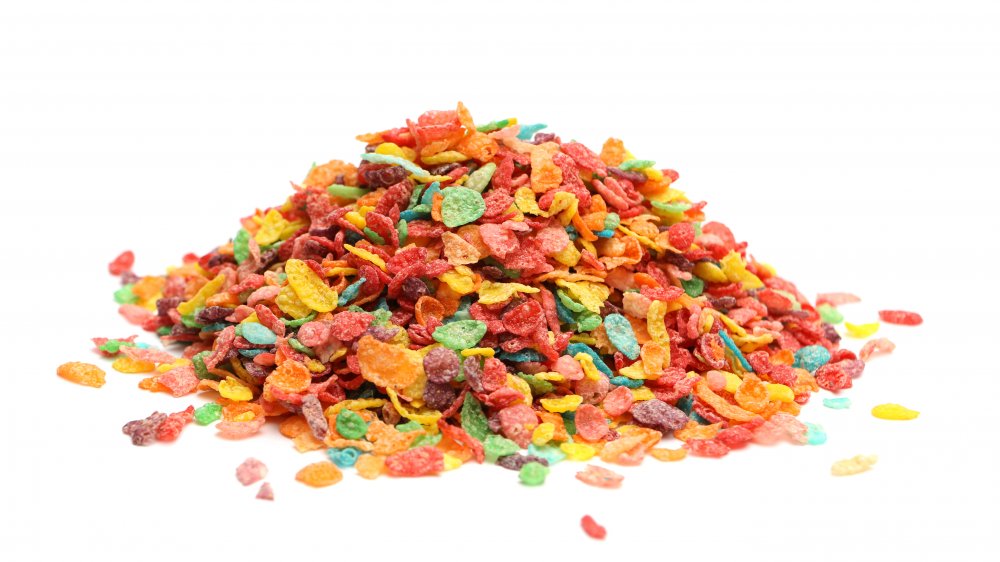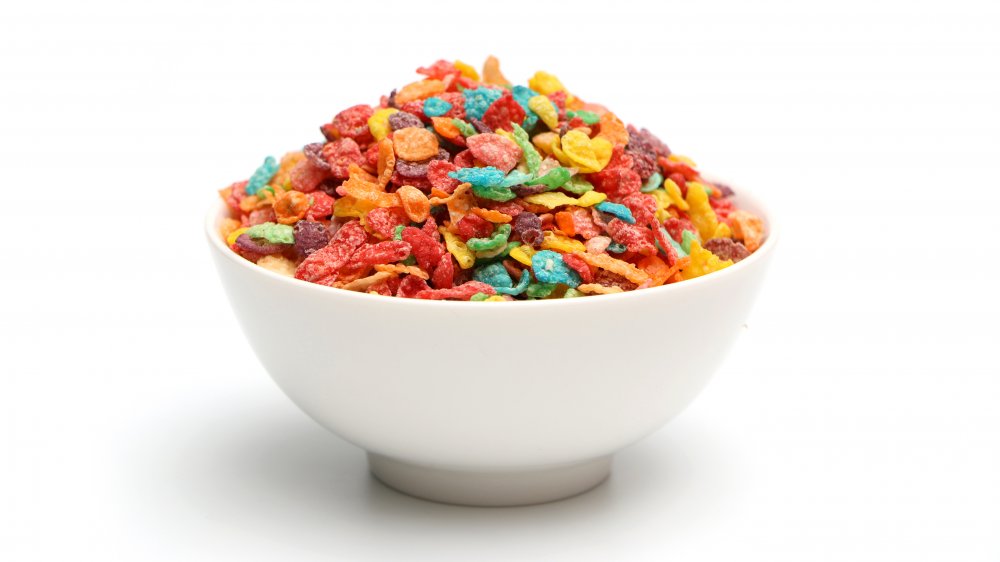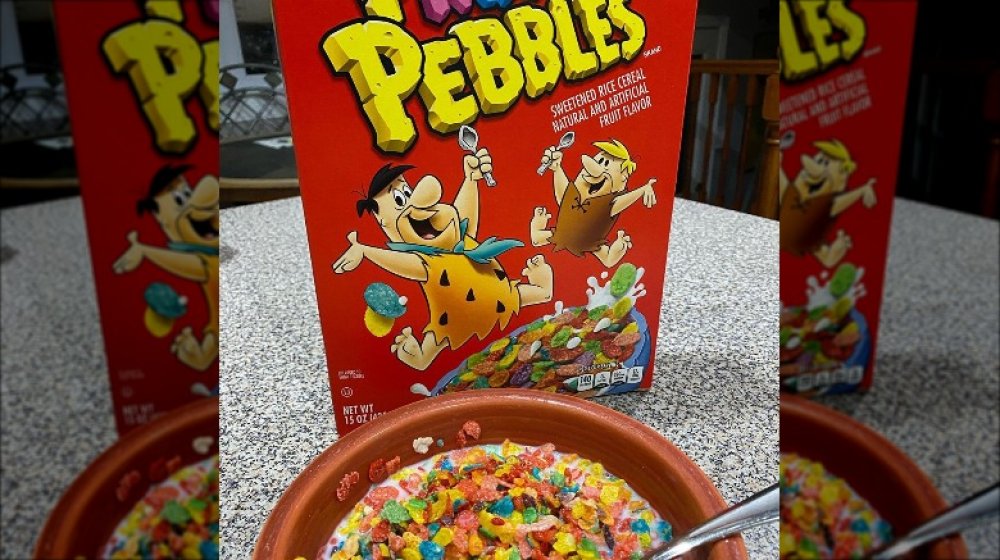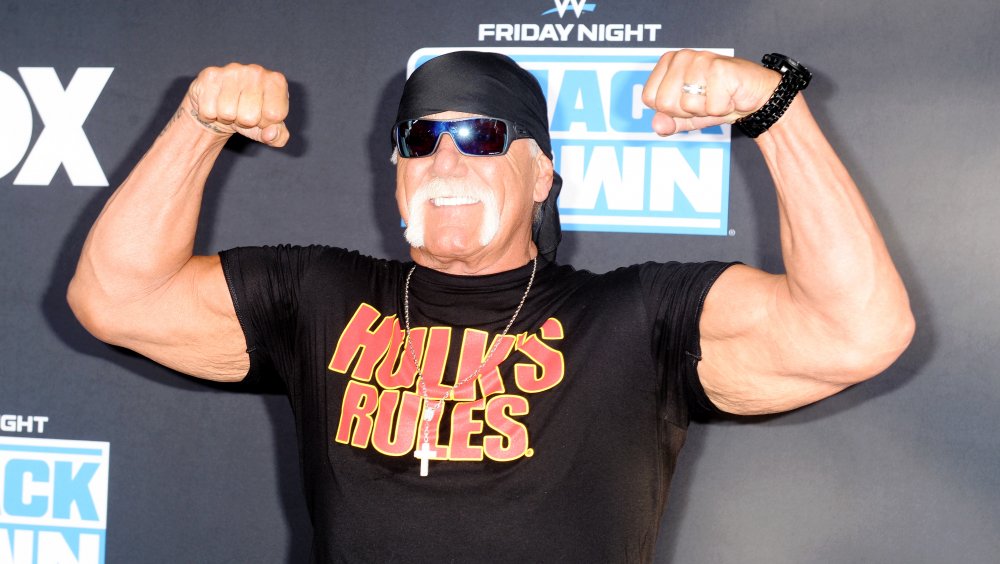The Untold Truth Of Fruity Pebbles
Although it seems that Fruity Pebbles have been around since the dawn of time (perhaps it's the use of the prehistoric Flintstone family as their longtime mascots?) they are a relative newcomer to the breakfast cereal shelf of the grocery stores across the country, having only been introduced to the American market in 1970 (via Post Cereals). Other cereals that are still on shelves and in pantries such as Frosted Flakes and Golden Crisp date back to the 1950s.
Fruity Pebbles were brought on the scene at the same time as their chocolate-flavored counterpart, Cocoa Pebbles, but it seems that every cereal eater has their own strongly-held belief about which of the two cereals is superior. A full bowl of the fruity variety looks like a beautiful vat of sugary confetti, and there is something about the tiny size of the cereal which makes it easy to rip through bowl after bowl of this breakfast classic.
The ever-changing Fruity Pebbles
Some cereals don't ever change, and they manage to maintain their same formula since they came into existence. This is not the case with Fruity Pebbles, the recipe and appearance of which has been changed and tinkered with over time.
In the beginning, there were only three colors in every box: yellow, red and orange (via Pop History). You can even tell that the cereal didn't always look so vibrant by looking at old boxes of the cereal,which feature just a handful of colors in the bowls on display.
In 1980, purple was added and green pebbles were included beginning in 1984. In the 2000s, the formula for Fruity Pebbles also included a fiber additive called polydextrose, which ruffled some feathers since it is widely considered a fake, "functional" fiber as opposed to natural dietary fiber (via Slate). Unconfirmed reports say that this ingredient has been removed from the cereal as of 2012, but it's best to check the ingredients list yourself to make sure.
The untold history of the Fruity Pebbles mascot family
The Flintstones are no longer on the minds of American television viewers the same way they were in the 1960s, but even someone with a very minimal knowledge of cartoon history likely knows that Fred and Wilma's daughter was named Pebbles. This occurred to the executives of Post Cereal as well, who thought that using the Flintstones to advertise a cereal named after their daughter would be a brilliant business move (via Mr. Breakfast).
The timing wouldn't have been better for the cartoon franchise either, as the series was canceled in 1966. Less than five years later, because a group of cereal executives decided to tie these two unlikely commodities together, the Flintstones had a new gig hawking sugary breakfast cereal. Even though Fred Flintstone might not be as well known as he once was, he's graced the boxes of Fruity Pebbles for over 50 years.
Legal troubles for Post cereal
WWE wrestler Hulk Hogan filed a lawsuit against the cereal maker Post when a commercial for Fruity Pebbles' sister cereal Cocoa Pebbles aired showing Fred Flintstone and his friend Barney in a wrestling match against a wrestler by the name of Hulk Boulder (via The St. Petersburg Times). At the end of the commercial, Fred's Daughter Bamm-Bamm smashes Hulk Boulder and the famous (real-life) wrestler thought that the commercial had harmed his image.
Though some might scoff and say that Hogan was being unreasonable and making something out of nothing, a closer look at the case reveals that he may have had a point. According to his autobiography, at the beginning of his career, Hogan used the name Hulk Boulder before he decided he wanted to change it to make it sound more Irish. The lawsuit was settled by the end of that year with the cereal company agreeing not to air the commercial any longer.



